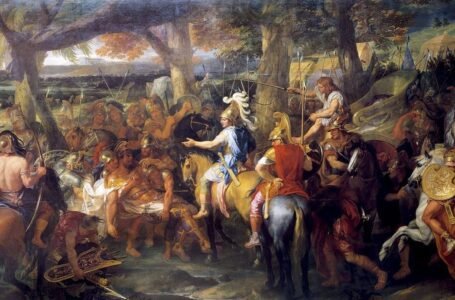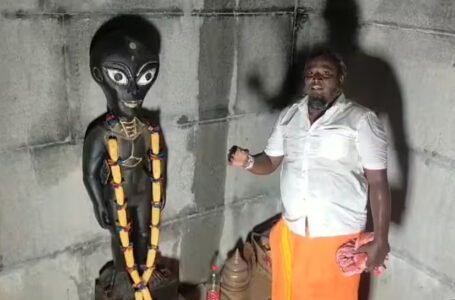Goddess Jwalamukhi: The Eternal Flame of Divine Energy

The Jwalamukhi Temple is in the beautiful Kangra valley of Himachal Pradesh and is among the few unique temples in India devoted to the Goddess Jwalamukhi (The Goddess of the eternal flame). Unlike the usual temples that harbour idols within their sanctum, this temple attracts pilgrims solely because of a curious natural phenomenon: perpetual flames that trickle out of cracked rocks.
The Jwalamukhi Temple is an outstanding pilgrimage centre in a symbolic moment of the sacred bond between the inhabitants and the divine. Recognized as one of the Shakti Peethas, the temple is very important in Hindu mythology and is understood to be the representation of Goddess Durga’s energetic power. Pilgrims from all across the country visit this holy place to receive blessings from the goddess, view the miraculous flames, and absorb the presence of the Goddess.
The Legend of the Eternal Flame
The worship of the Goddess Jwalamukhi is quite old in Hindu mythology, featuring prominently in the legends of Sati and the Shakti Peethas. According to the mythology, this all began when Sati, wife to Lord Shiva, consigned herself to the flames, that too at her father’s insult. Sorrowful over Sati’s immolation, Lord Shiva performed the cosmic dance of destruction called Tandava. To appease Shiva and to prevent the destruction of the universe, Lord Vishnu, using his Sudarshan Chakra, severed Sati’s body and scattered her body parts across the Indian subcontinent, which thereafter gave birth to the Shakti Peethas.
The Jwalamukhi Temple is believed to stand over the place where Sati’s tongue fell, and the eternal flames are said to be her divine energy. The flames leap spontaneously from the rock, smouldering for centuries without any clear sign of a fuel source, mystifying the place with a pedigree of sanctity.
Local folklore also imbues the goddess with some association with the defeat of demons. It is said that when the region was terrorized by the demon Jalandhara, the goddess manifested as flames to vanquish him, in a show of good over evil.
History of the Jwalamukhi Temple
The history of the Jwalamukhi Temple is as fascinating as its legends; however, the beginning of this shrine remains cloaked in mystery up to the present. Some references to it can be traced back to ancient texts and folklore. It is said to be one of the prominent centres of spirituality since time unknown, with initial records showing its existence during the reign of Raja Bhumi Chand, a local king of Kangra.
Legend has it that Raja Bhumi Chand, a devout worshipper of Goddess Durga, saw a vision wherein Goddess gave him the direction to find the spot where flames shot from the earth. Guided by her vision, he found the place and built the first temple in her worship. Over time, it has been renovated throughout the years by different rulers.
It is said that Akbar tried to cover the flames with a red-hot iron canopy, but the flames didn’t extinguish, therefore he presented a gold umbrella to the temple, reportedly out of respect and devotion. She is said to have rejected his offering, turning it into normal metal, according to the different legends.
The temple has survived through time’s ravages and the rise and fall of numerous dynasties. Its continued existence is a symbol of the people’s faith throughout the ages and the holiness of the Mother Goddess.
Architectural and Cultural Significance
The Jwalamukhi Temple is the epitome of traditional Himalayan architectural brilliance that marries simplicity and magniloquent spirituality. The temple has been constructed on an elevated wooden platform with a dome-shaped structure, richly carved and gold plated. The inner sanctum has the flames of the Goddess emerging from crevices on the rock. There are natural springs and spectacular scenery surrounding the temple, enhancing the grand tranquil and mystical atmosphere.
The temple serves as a focal point for local traditions and other cultural activities. Festivals such as Navratri tend to be colourful and exuberant occasions when thousands of worshipers offer prayers, perform rituals, and participate in community feasts. Traditional dances, music, and recitation of hymns create an atmosphere of exuberance, expressing a cultural bond between the people and the goddess.
The Spiritual and Scientific Fascination
Jwalamukhi Devi Temple, with its combusting flame, attracts not only devotees but also scientific curiosity. It is a natural phenomenon created by the burning of the underground gases that escape through the rock crevices, primarily methane. Despite scientific explanations, the flames stand as divine energy, an everlasting mystery that enchants both devotees and researchers alike.
This spiritualism and science give this temple, making it one of pilgrimage and wonder. To devotees, the flames signify the presence of the goddess in corporeal form; conversely, for scientists, they represent a splendid natural occurrence worthy of exploration and study.
Rituals and Worship Practices
The Jwalamukhi Temple is simple and devotional, making the worship a truly spiritual experience. Unlike other temples, which worship idols, this temple worships flames, assumed to be the living form of the goddess. Devotees pour milk, ghee, and grains into the flames along with flowers and incense.
Every day ceremonies of aarti (prayers) accompany the chanting of hymns and the sound of bells performed by the temple priests. The look of flames flickering to the rhythmic chants creates a paradigm of otherworldly allure, leaving the devotees peaceful and connected to the Divine.
The festival seasons, mainly Navratri, become the epicentre for spiritual actions along with celebrations that include colourful parades, adequate poojas, and cultural entertainment. Sri Jwalamukhi temple, in this way, is an ever-gathering means of garnering a medley of pilgrims for blessings and witnessing the great spirit of celebration.
Impact on Local and Tribal Beliefs
Goddess Jwalamukhi enjoys the distinction of having the highest regard among the local and tribal communities of Himachal Pradesh, where she is more than a goddess to them. She is seen as a protector who guards them against perils and assures wellness among all walks of life. For these communities, worshipping the Goddess is part of their identifying characteristics that forge their customs, traditions, and way of life.
Women especially consider the goddess as an icon of power and gain a lot of strength and inspiration from her fiery disposition, plus temple space is provided to women to offer their prayers and wishes, giving them a sense of solace and empowerment.
Conclusion
The Jwalamukhi Temple is a shrine of faith, spirit, and culture, showing the eternal etching of a relationship between humanity and the providential. The burning flames are a reminder of the eternal presence of the goddess and a source of safety and life to all her devotees.
In a world where proof of divinity is often sought, the Jwalamukhi Temple is an experience that can touch one’s soul and elevate limits posed by science and faith. This place houses both the spiritual and the natural, instilling awe and devotion in every glimmer.
Through centuries of dedication and spirit, the legacy of Goddess Jwalamukhi continues to shine brightly upon the earth to enlighten the lives of humans seeking her strength. A real unassailable bond connects the human spirit with the divine torch.


